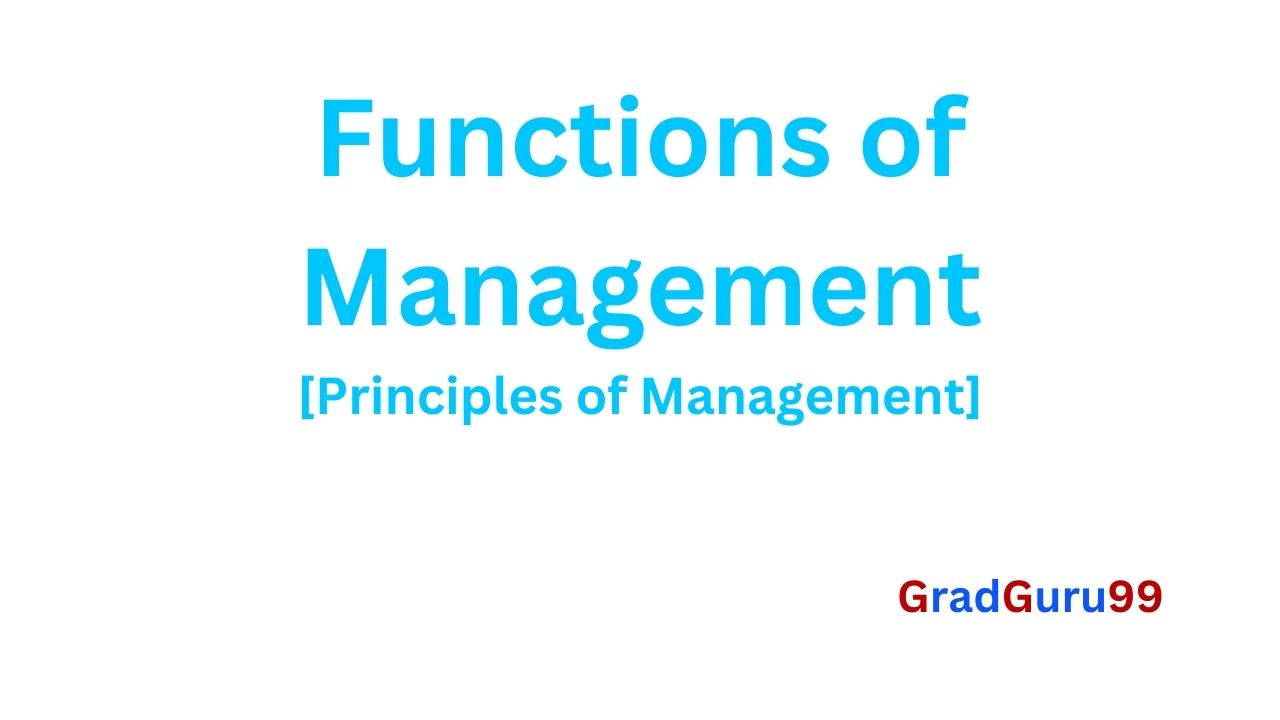In this article, we will cover a fundamental topic of “Principles of Management” and this topic is “Functions of Management“. This article will benefit students of BCA, BSc, and BTech who have this subject in their syllabus.
Now, what is Management? One popular definition by Mary Parker Follett goes like this: Management is the art of getting things done through people.
Functions of Management
Management functions can be classified as planning, organizing, staffing, directing, and controlling.
Planning
Planning is the function of management that involves setting the mission and business objectives and determining a future course of action from among alternatives (decision-making).
In other words, it is the determination of what is to be done, how and where it is to be done, etc.
Extra: Without decision-making, a Real Plan doesn’t exist. Without decision-making, what exists is a Planning Study/An Analysis/or a Proposal.
Organizing
Organizing is the function of management that involves establishing a role structure for the people to fill in an organization.
Organizing is intentional – Because roles and role structure are created in such a way that all necessary tasks can be assigned to the right roles.
Note: Organizing (designing the role structure for the org) is the precondition of the management function “Staffing”.
Staffing
Staffing is the function of management that involves filling, and retaining, the positions in the organizational role-structure.
In staffing, the manager attempts to find the right person for each job.
- Recruitment / New Hiring: Managers are responsible to recruit or hire new resources. They have to make certain that there is enough manpower available to fill the various positions needed in the organization.
- Upgrading already existing human resources: Staffing involves training, grooming, and promoting existing human resources for the next bigger roles so that they can be deployed in different vacant roles in the role structure.
- Compensation: It also necessitates a suitable system of compensation.
- Continuous Staffing process: Staffing obviously cannot be done once and for all, since people are continually leaving, getting fired, retiring and dying. Often too, the changes in the organisation create new positions, and these must be filled.
Directing/Leading
Directing/Leading is the function of management that involves leading and motivating employees and influencing their behavior to achieve organizational objectives. Directing is related to People Management.
Directing thus involves three sub-functions—communication, leadership, and motivation.
- Communication is the process of passing information and understanding from one person to another.
- Leadership is the process by which a manager, as a leader, leads, guides, and influences the work of his subordinates.
- Motivation means arousing the desire in the minds of workers to give their best to the enterprise. It is the act of stimulating or inspiring workers.
Controlling
Controlling is the function of management that helps in (1) measuring individual, group, and organizational performance against the goals & plans, (2) showing where deviations exist, & (3) suggesting corrective measures and action.
Importance:
- In the absence of sound control, there is no guarantee that the objectives which have been set will be realized.
- The management may go on committing mistakes without knowing them.
- Control compels events to conform to plans
Conclusion
In the above sections, we have discussed the fundamentals of planning, organizing, staffing, directing, and controlling.


